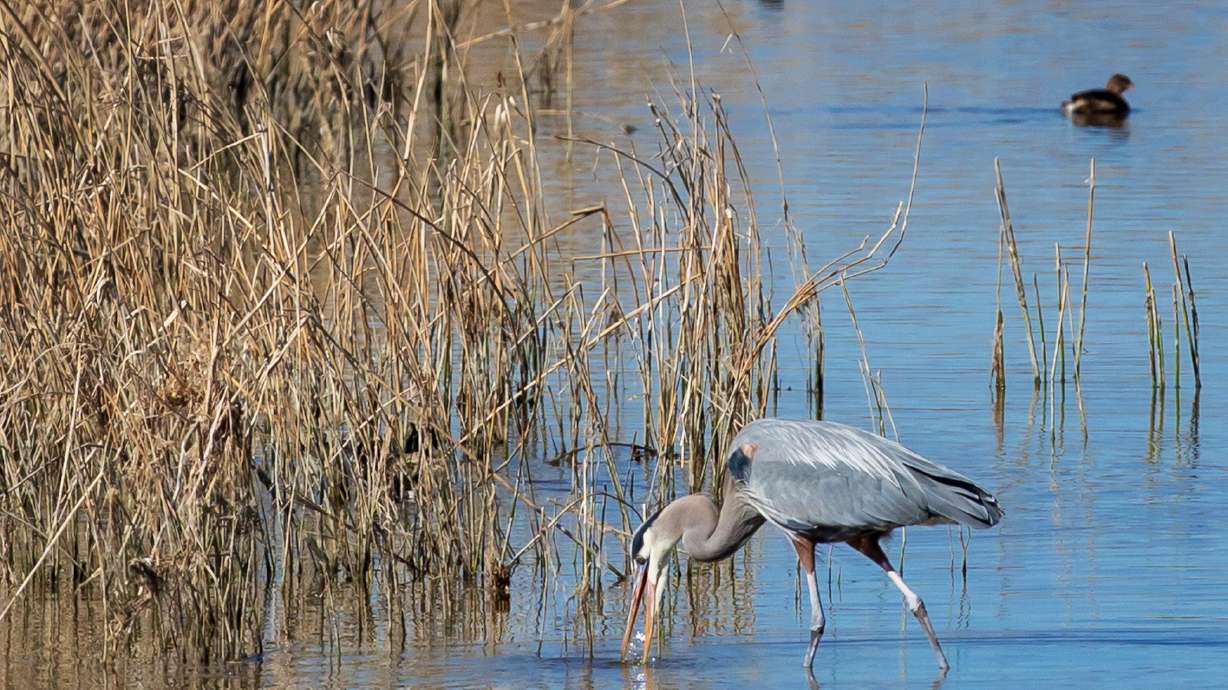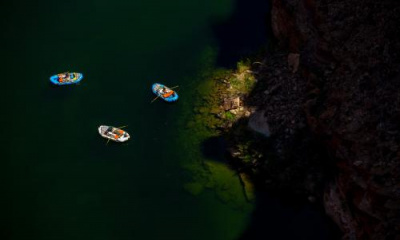SALT LAKE CITY — The Church of Jesus Christ of Latter-day Saints has agreed to donate 5,700 water shares that will send more than 20,000 acre-feet of water to the struggling Great Salt Lake every year, Utah officials announced Wednesday.
The church's water donation will come from the North Point Consolidated Irrigation Company, allowing water to flow to the "critical shoreline and wetland habitat" in Farmington Bay, according to the Utah Department of Natural Resources. It's set to add 50 cubic feet per second of water that was previously designed for agricultural uses in the area.
Officials said they believe it is the largest permanent water donation to help the Great Salt Lake, ever. The amount of water that will annually flow into the lake is about the size of Little Dell Reservoir in the Parleys Canyon area.
Utah Gov. Spencer Cox tweeted Wednesday that the state had been negotiating the deal "for a long time" and that he was thrilled that it is now finalized.
"This water donation will make a real difference to the lake and the future of our state," he added in a statement. "The Great Salt Lake is a critical asset environmentally, ecologically and economically, and we all need to work together to protect and preserve it."
The Great Salt Lake reached an all-time low for the second time last year. That's raised concerns because the lake is considered a vital habitat for an estimated 10 million birds, while also contributing to nearly $2 billion to Utah's economy through the various industries in the area.
Every foot the lake drops also exposes more of its toxic lakebed that can turn into dust that blows into the communities by its shore.
While the Great Salt Lake has already risen 1½ feet since November because of strong winter precipitation, experts say it's still well below the level it needs to be to avoid serious consequences. A group of researchers pointed out that the lake was 6.9 million acre-feet of water below the minimum healthy elevation at the start of this year.
Donations could help chip away at that significant deficit, especially since researchers note that consumption accounts for at least two-thirds of the lake's decline.
In fact, the Great Salt Lake Strike Team — a combination of two Utah research universities and three Utah agencies — issued a report last month that found temporary or permanent water donations are one of the more cost-effective and efficient solutions for getting water back into the lake.
Though the church's donation won't save the lake, both Utah Department of Natural Resources officials and church officials said Wednesday that they hope others will follow.
"The Great Salt Lake and the ecosystem that depends on it are so important," said Bishop W. Christopher Waddell, the first counselor in the Presiding Bishopric of The Church of Jesus Christ of Latter-day Saints, in a statement.
"The church wants to be part of the solution because we all have a responsibility to care for and be good stewards of the natural resources that God has given to us," his statement continued. "We invite others to join with us to help."
The Utah Legislature formed the Great Salt Lake Watershed Enhancement Trust last year. The newly formed trust began operations this year after its advisory council was formed. Marcelle Shoop, the trust's executive director, called the new donation an "exceptional contribution" toward the goal of refilling the lake.
The strike team's report also highlighted the importance of agriculture water optimization. The Legislature agreed to add $200 million in state funds toward a state program that helps farmers and ranchers pay for upgrades to equipment that allow them to be more efficient with their water use.
It was one of a handful of Great Salt Lake-centric water measures approved by the legislature this year.









